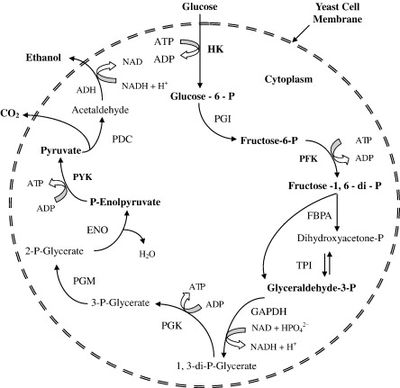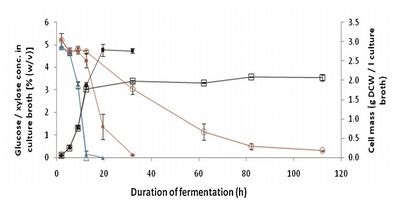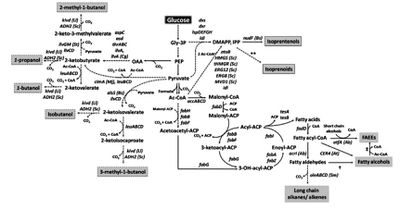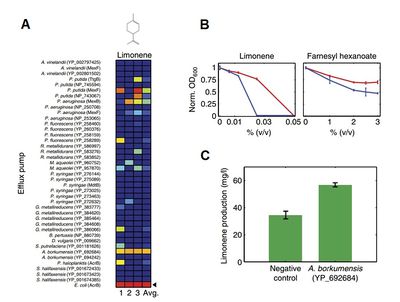Microbial Biofuels: Current Production and Future Prospects: Difference between revisions
From MicrobeWiki, the student-edited microbiology resource
No edit summary |
No edit summary |
||
| Line 2: | Line 2: | ||
<br>By [Student Name]<br> | <br>By [Student Name]<br> | ||
<br><br>Other examples: | <br><br>Other examples: | ||
<br><b>Bold</b> | <br><b>Bold</b> | ||
Revision as of 02:08, 24 April 2013
Introduction
By [Student Name]
Other examples:
Bold
Italic
Subscript: H2O
Superscript: Fe3+
Introduce the topic of your paper. What microorganisms are of interest? Habitat? Applications for medicine and/or environment?
Current Microbial Biofuels: Ethanol Produced by Fermentation

Figure 1. An overview of glycolysis. A single molecule of glucose is oxidized to two molecules of pyruvate. Pyruvate can then be decarboxylated to form acetaldehyde, which can act as the terminal electron receptor under anoxic conditions in S. cerevisiae to produce ethanol.
Image source: http://www.sciencedirect.com/science/article/pii/S0734975007001000 [3]
Image source: http://www.sciencedirect.com/science/article/pii/S0734975007001000 [3]
Alternative Ethanol-Producing Microorganisms: Zymomonas mobilis and Escherichia coli

Figure 2. Strains of Zymomonas mobilis capable of inefficient xylose fermentation were cultured for an extended period of time in medium containing both glucose and xylose, to select for the ability to ferment xylose more efficiently. After an extended period of time, the strain A3 was separated from A1, and cultured in xylose-only medium. Here A1 and A3 were cultured independently in medium containing 5% glucose with or without 5% xylose. A1 only grew quickly when glucose fermentation could occur, but A3 grew quickly when either glucose or xylose fermentation was possible. Black squares represent overall cell mass, blue triangles represent "glucose only" experiments, red circles represent glucose and xylose experiments, filled circles represent A1, empty cirles represent A3.
Image source: http://onlinelibrary.wiley.com/doi/10.1002/bit.23021/full [1]
Image source: http://onlinelibrary.wiley.com/doi/10.1002/bit.23021/full [1]
Alternative Feedstocks
Lignocellulose
Fatty Acids and Glycerol
Alternative Biofuels

Figure 3. A diagram illustrating the breadth and complexity of developed non-fermentative biofuel synthesis pathways for E. coli. Dotted arrows represent a multi-step pathway. Abbreviations in parentheses correspond to the gene's species of origin when it is not E. coli.
Image source: http://link.springer.com/article/10.1007/s00253-010-2446-1 [6]
Image source: http://link.springer.com/article/10.1007/s00253-010-2446-1 [6]
Other Fermentation Products
Non-Fermentation Products
Improving Microbial Biofuel Production: Recent Developments
Using Efflux Pumps to Improve Biofuel Production

Figure 4. Results illustrating how the addition of certain efflux pumps can confer resistance to high concentrations of the biofuel Limonene, as well as increase Limonene production.
Image source: http://www.nature.com/msb/journal/v7/n1/full/msb201121.html [8]
Image source: http://www.nature.com/msb/journal/v7/n1/full/msb201121.html [8]
References
Edited by student of Joan Slonczewski for BIOL 238 Microbiology, 2011, Kenyon College.
